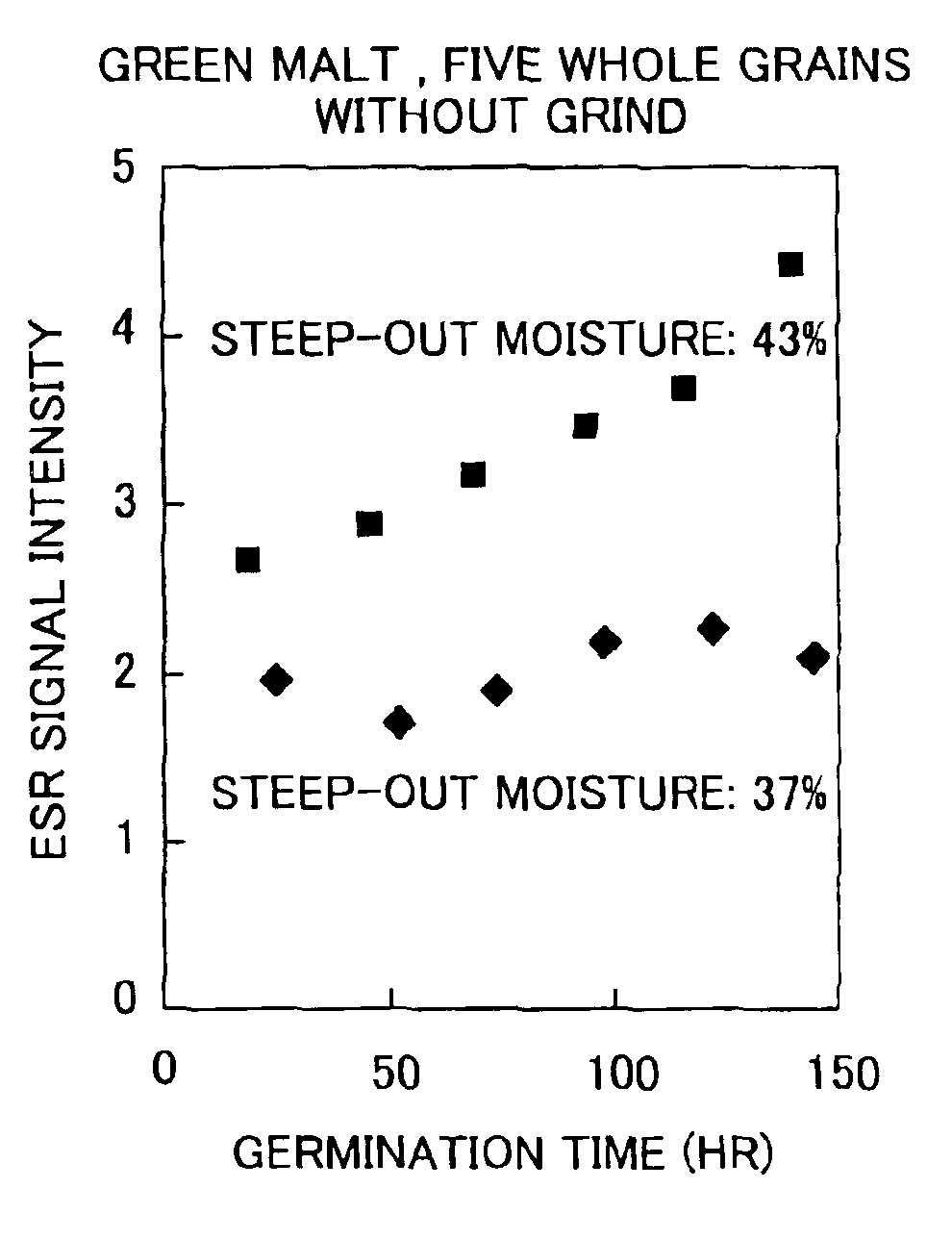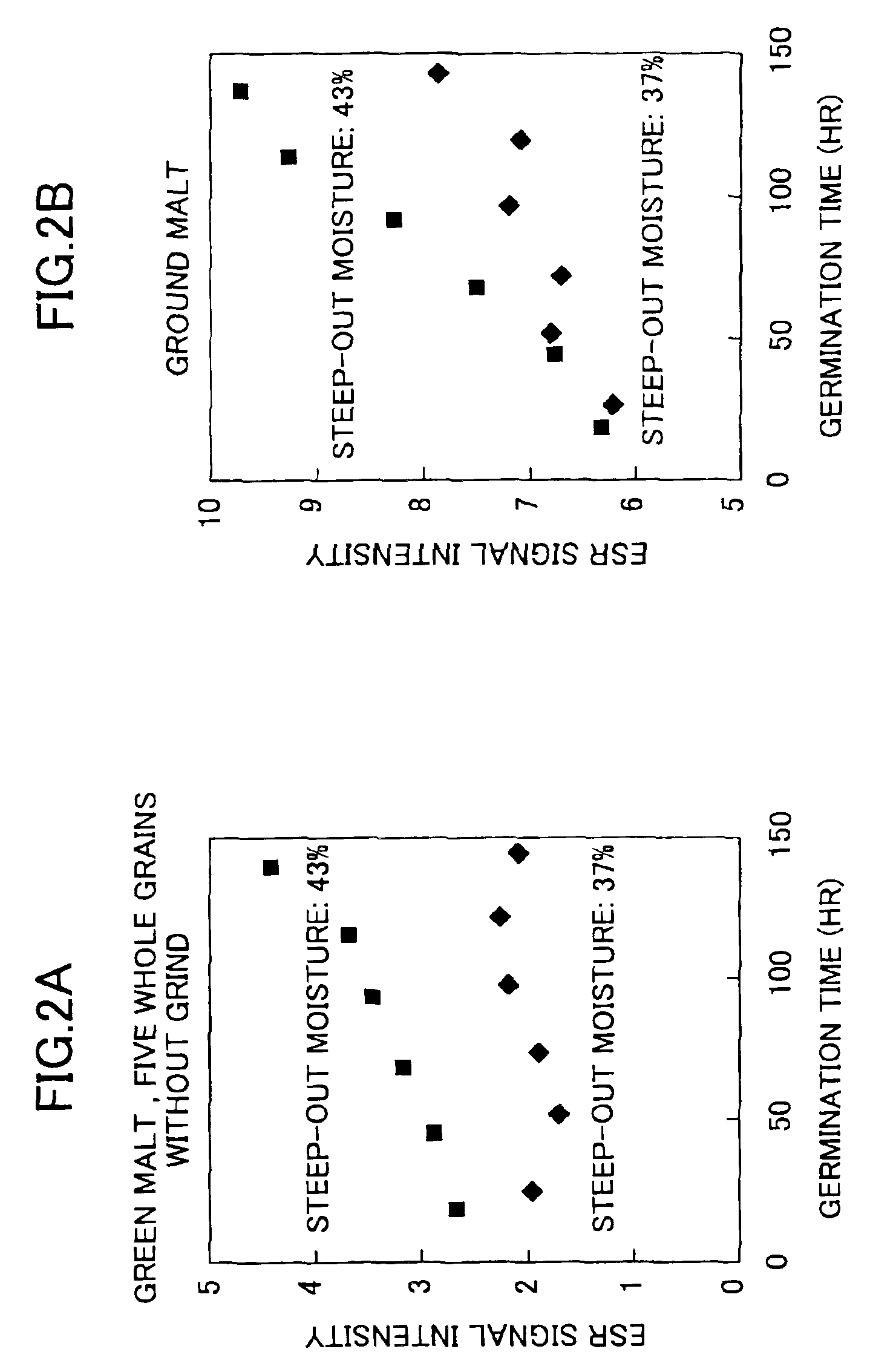Method of evaluating green malt qualities by electron spin resonance spectrometry and method of evaluating malt qualities
a technology of electron spin resonance spectrometry, which is applied in the field of quality evaluation of malt using electron spin resonance (esr) analysis, can solve problems such as haze after freezing, unfavorable brewing process, and uneven lautering of mash
- Summary
- Abstract
- Description
- Claims
- Application Information
AI Technical Summary
Benefits of technology
Problems solved by technology
Method used
Image
Examples
Embodiment Construction
[0030]Embodiments of the present invention are described in more detail below. The outline of the ESR analyses performed by the inventors is described first.
(1) Barley, Malt Sample
[0031]If much moisture is contained in the sample, the moisture absorbs the electron spin resonance. When solid samples containing much moisture are measured with an ordinary ESR analysis method, the moisture needs to be removed. Accordingly, green malt was used after being lyophilized, as a sample for the analysis of germinating barleys (green malt). However, since malt contains low enough moisture, the malt was used as a sample without being lyophilized.
[0032]Japanese “Amagi Nijo” barleys and Canadian “Kendall” barleys were used as the samples. They were malted with a 90 kg-scaled pilot malting plant. The barleys were steeped in water at 14° C. and were germinated at 14° C. Malt with different germination time was prepared using an 8 kg-scaled kilning apparatus.
(2) ESR Analysis
[0033]The ESR analysis was ...
PUM
 Login to View More
Login to View More Abstract
Description
Claims
Application Information
 Login to View More
Login to View More - R&D
- Intellectual Property
- Life Sciences
- Materials
- Tech Scout
- Unparalleled Data Quality
- Higher Quality Content
- 60% Fewer Hallucinations
Browse by: Latest US Patents, China's latest patents, Technical Efficacy Thesaurus, Application Domain, Technology Topic, Popular Technical Reports.
© 2025 PatSnap. All rights reserved.Legal|Privacy policy|Modern Slavery Act Transparency Statement|Sitemap|About US| Contact US: help@patsnap.com



